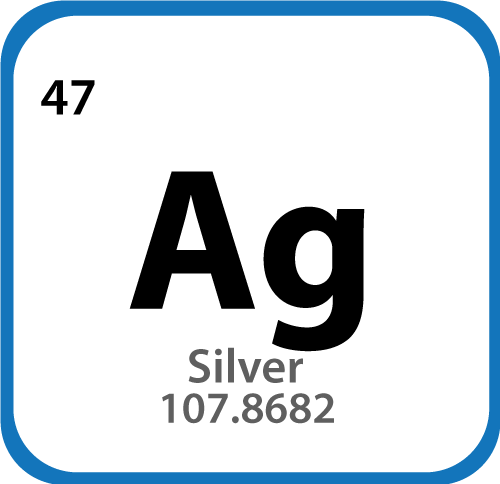About Silver
Silver is a chemical element with the symbol Ag and atomic number 47. A soft, white, lustrous transition metal, it exhibits the highest electrical conductivity, thermal conductivity, and reflectivity of any metal. The metal is found in the Earth’s crust in the pure, free elemental form (“native silver”), as an alloy with gold and other metals, and in minerals such as argentite and chlorargyrite. Most silver is produced as a byproduct of copper, gold, lead, and zinc refining.

Key facts
- Symbol: Ag
- Melting point: 961.78 °C
- Atomic number: 47
- Atomic mass: 107.8682 u
Criticality
Most of the targeted by-products elements are Critical Raw Materials (CRMs). CRMs combine raw materials of high importance to the EU economy and of high risk associated with their supply. Silver is not part of the EU 2020 Critical Raw Materials List.
Main uses of Silver
Coins, silverware and jewellery: due to its malleability and reflectivity, Silver is firstly used to make coins, silverware and jewellery.
Paints, oxides and photography: Silver is used in paint for the highly antimicrobial virtue of their antiseptic properties. In photography, Silver is used for its high optical reflectivity.
Electrical and electronics industry: Silver’s usage is widespread (electrical contacts, switches, multi-layer ceramic capacitors), with end-markets for these components including cell phones, PCs and computers and automotive applications.
And also: In solar PV cells, brazing alloys and solders, high capacity batteries, glass and mirrors, engine bearings, medicine, and more.

